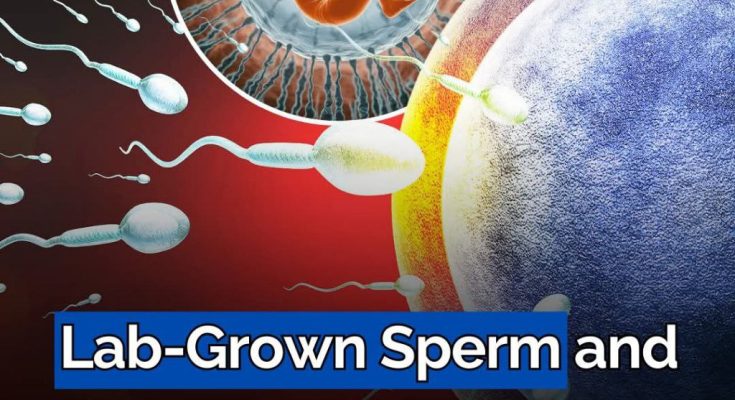Imagine a future where the birth of a child could transcend the boundaries of natural biology, offering options beyond what nature dictates. This isn’t the plot of a new science fiction film; it’s a reality that could soon be upon us through the advancements in a groundbreaking technology known as in-vitro gametogenesis (IVG). This innovative approach has the potential to redefine the concepts of fertility and parental choice, promising profound changes in how we conceive new life.
IVG stands at the intersection of genetic technology and reproductive health, posing intriguing questions about the future of human reproduction. Could we really design our offspring? What does it mean for a child to be born with specified traits chosen from a catalog of genetic options? As we venture into this uncharted territory, the possibilities—and ethical challenges—seem limitless.
Understanding In-Vitro Gametogenesis (IVG)
In-vitro gametogenesis, or IVG, represents a significant leap in reproductive technology, standing on the cusp of what many would consider impossible. At its core, IVG involves creating viable human sperm and eggs from pluripotent stem cells—cells that have the potential to develop into any type of cell in the body. This process begins by reprogramming adult cells, such as those from skin or blood, into induced pluripotent stem cells (iPSCs). These iPSCs are then stimulated through a series of biological processes to become gametes, effectively mimicking the natural gametes produced in human ovaries and testes.
The science behind IVG is not just about mimicking nature, but enhancing it. Initially explored as a way to help individuals struggling with infertility, IVG’s potential extends far beyond. It opens the door for individuals regardless of age, fertility status, or gender identity to have biological children. This includes same-sex couples who could have children genetically related to both parents without the need for donor eggs or sperm.
The development of this technology has been rapid, with researchers having already demonstrated the feasibility of producing mouse offspring using IVG. The step to human application involves ensuring the process is safe and effective, which remains a complex and ongoing challenge. Researchers must confirm that lab-created gametes can carry genetic information accurately and without introducing mutations that could lead to health issues down the line.
As we stand on the brink of applying this technology to human reproduction, the scientific community continues to tread carefully, aware of the profound implications IVG holds. It’s not merely a new fertility treatment but a tool that could fundamentally change our approach to procreation, offering unprecedented control over the genetic makeup of future generations.
Potential Benefits of In-Vitro Gametogenesis (IVG)

The advent of in-vitro gametogenesis (IVG) could usher in a new era of reproductive possibilities, bringing significant benefits to various groups within society. Here are some of the key potential advantages of this emerging technology:
- Expanded Options for Infertility Treatment: IVG could be a game-changer for those unable to conceive naturally. By generating gametes from a person’s own cells, IVG offers a potential solution for individuals facing infertility due to age, medical treatments, or congenital conditions. This technology could provide them the chance to have genetically related children, which is not possible with current assisted reproductive technologies that rely on donor sperm or eggs.
- Opportunities for Same-Sex Couples: IVG holds particular promise for same-sex couples who wish to have children. Currently, such couples may rely on donor gametes, meaning only one partner can be biologically related to the child. IVG could potentially allow both partners to contribute genetically, deepening the familial bond and equality in parenting.
- Reduction of Genetic Disorders: One of the most compelling medical potentials of IVG is its ability to help eradicate genetic diseases. By using IVG in conjunction with genetic screening technologies, parents could avoid passing on inherited conditions by selecting embryos free from specific disorders. This proactive approach could significantly reduce the incidence of genetic diseases in future generations.
- Freedom from Biological Constraints: IVG could democratize reproduction by removing some biological constraints. Age, single status, or health issues that typically impact fertility could become less of a barrier, broadening the scope of who can have children and when.
- New Research Avenues: Beyond its direct applications in fertility treatments, IVG could revolutionize research in genetics, embryology, and reproductive biology. By providing an abundant source of human gametes, researchers could undertake studies that were previously unimaginable due to ethical and material limitations, potentially leading to breakthroughs in understanding human development and diseases.

Regulatory and Legal Landscape of In-Vitro Gametogenesis (IVG)
As in-vitro gametogenesis (IVG) edges closer to becoming a practical reality, the regulatory and legal framework surrounding this technology is under intense scrutiny. The potential of IVG to alter the fundamentals of human reproduction necessitates a comprehensive and forward-thinking legal approach to address the myriad ethical, societal, and scientific challenges it presents.
Current Regulatory Status: At present, IVG is primarily regulated within the broader framework of assisted reproductive technologies (ARTs), which vary significantly across countries. In many regions, the use of ARTs is closely monitored, with specific regulations governing the use of human embryos, genetic screening, and the rights to privacy and consent. However, IVG introduces complexities that extend beyond the current scope of most ART regulations, such as the creation of gametes from induced pluripotent stem cells, which necessitates new regulatory considerations.
Need for New Regulations: The unique aspects of IVG—such as the potential to create a child from the cells of a single individual, or from multiple individuals beyond traditional two-parent models—require specific regulations that are not currently covered under existing laws. These new rules will need to address not only the technical and safety aspects of the technology but also ethical concerns such as genetic modification, the prevention of genetic inequality, and the potential commercialization of human life.
International Perspectives and Harmonization: There is also a significant need for international cooperation and harmonization of regulations. IVG could have global implications, and the movement of genetic materials and IVG technologies across borders could pose significant regulatory challenges. An international consensus on the ethical use of IVG would help prevent a patchwork of regulations that could lead to “reproductive tourism,” where individuals travel to countries with less stringent regulations to access certain IVG services.
Public Involvement and Policy Making: Effective regulation of IVG will also require public involvement. The views and concerns of the public must be considered in developing policies that govern the use of such a transformative technology. This involves engaging in widespread consultation processes, public debates, and education campaigns to ensure that regulatory frameworks reflect societal values and ethical standards.
Reflections on the Future of Engineering Life and the Soul’s Journey
As science inches closer to unlocking the ability to engineer human life with precision, we find ourselves facing profound questions about the nature of existence, identity, and consciousness. Lab-grown sperm and eggs present a future where parents can design their children—eliminating genetic diseases, enhancing intelligence, and even selecting physical traits. But beyond the allure of technological advancement, what does this mean for the spiritual essence of being human?
Human identity has long been shaped by an intricate dance between nature and nurture, genetics and experience, fate and free will. If we begin customizing life at its inception, do we risk shifting from organic beings to curated creations? Will children still grow into themselves naturally, or will they feel like an assembly of expectations—crafted not by divine mystery, but by human preference?
Spiritual traditions teach us that life unfolds in ways beyond our control, that struggle and imperfection are essential for growth, and that the soul chooses its body and experiences as part of a greater journey. If we remove the randomness of birth and tailor human potential in a laboratory, what happens to the soul’s evolutionary path? Are we intervening in a process that is meant to unfold in divine timing, or are we merely stepping into the role of conscious creators, fulfilling a destiny of our own making?
This scientific leap brings undeniable benefits—freedom from inherited diseases, longer lifespans, and even heightened cognitive abilities. Yet it also raises a fundamental question: If we eliminate all obstacles from the beginning, will we lose something essential to the human experience? Consciousness is not just the result of biology; it is the sum of struggles, triumphs, and unexpected transformations. If we manufacture predictability in our genetic blueprint, do we limit the soul’s ability to expand through the unknown?
In a world where the next generation is engineered, will we view life as a sacred unfolding or a technological construct? Perhaps the real question is not whether we can create life in this way—but whether we should. The answer may lie in how we define what it means to be truly human: a being shaped not just by perfection, but by the mystery, the chaos, and the divinely orchestrated imperfections that allow the soul to grow.
The Path Ahead for IVG
As we contemplate the vast potential of in-vitro gametogenesis (IVG), we are also called upon to navigate the ethical and societal challenges it presents. This revolutionary technology promises to transform the landscape of reproductive health by providing unprecedented control over the genetic makeup of future generations. However, with great power comes great responsibility. It is imperative that we proceed with caution, ensuring that ethical considerations, societal impact, and equitable access remain at the forefront of this technological evolution.
The future of IVG is not just a matter of scientific achievement but a profound reflection of our values as a society. We must strive to balance the desire for innovation with the need to uphold human dignity and diversity. As we forge ahead, it will be essential to develop comprehensive regulatory frameworks that can adapt to rapid scientific advancements and varied cultural contexts. Equally important is the role of public engagement and education, which will help shape a society that is informed about and prepared for the changes IVG may bring.
Ultimately, the success of IVG will depend not only on our ability to perfect the technology but also on our capacity to address the deep ethical questions it raises. By fostering a dialogue that includes a wide range of voices and perspectives, we can hope to harness the benefits of IVG while mitigating its risks. The path ahead is complex and fraught with challenges, but it also offers a unique opportunity to redefine the boundaries of human reproduction in a responsible and thoughtful manner.



